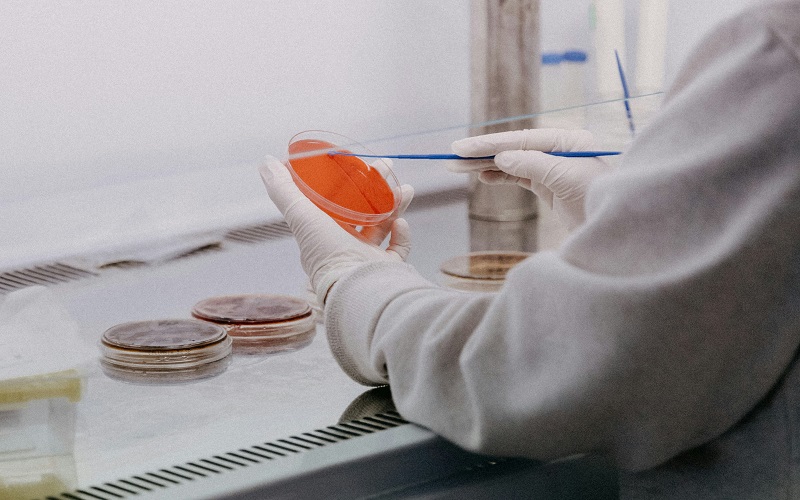Plants, the silent heroes of our planet, are not just culinary delights or decorative ornaments. They are nature’s chemical factories, churning out a vast array of bioactive compounds, including essential vitamins. Understanding the vitamin content of plants is crucial not only for human health and nutrition but also for optimizing agricultural practices and promoting sustainable food systems. This article delves into the fascinating world of plant vitamin analysis, exploring its methods, applications, and potential future directions.
The Spectrum of Plant Vitamins
Plants boast a diverse repertoire of vitamins, each with its unique role in human physiology. They can be broadly categorized into two groups based on their solubility:
- Water-soluble vitamins: These include the B-complex vitamins (B1, B2, B3, B5, B6, B7, and B9) and vitamin C. They are readily absorbed by the body and play vital roles in energy metabolism, cell function, and immune health.
- Fat-soluble vitamins: Vitamin A, vitamin E, and vitamin K fall under this category. They require fat for absorption and are stored in the body’s fat tissues. They are essential for vision, antioxidant defense, and blood clotting, respectively.
Methods of Plant Vitamin Analysis
Analyzing the vitamin content of plants is a complex task, requiring specialized techniques and meticulous protocols. Here are some commonly employed methods:
- Chromatography: This technique separates different components of a mixture based on their size, charge, or affinity to a stationary phase. High-performance liquid chromatography (HPLC) is a popular method for vitamin analysis, offering high precision and sensitivity.
- Spectroscopy: This technique analyzes the interaction of light with molecules, providing information about their structure and composition. Techniques like ultraviolet (UV) and mass spectrometry (MS) are often used in conjunction with chromatography for vitamin identification and quantification.
- Biochemical assays: These assays measure the specific activity of enzymes involved in vitamin metabolism, providing an indirect assessment of vitamin levels.
Applications of Plant Vitamin Analysis
The insights gained from plant vitamin analysis have far-reaching applications:
- Nutritional improvement: Identifying vitamin-rich plants can help develop nutritionally balanced diets and combat deficiencies, particularly in vulnerable populations.
- Food processing and storage: Understanding how processing and storage affect vitamin content allows for optimizing practices to minimize losses and preserve nutritional value.
- Breeding and genetic engineering: Analyzing vitamin levels in different plant varieties can guide breeding programs to develop crops with enhanced vitamin content. Additionally, genetic engineering techniques can be employed to increase vitamin biosynthesis in plants.
- Sustainability and food security: Improving the nutritional profile of crops through biofortification can contribute to food security and reduce reliance on synthetic vitamin supplements.
The Future of Plant Vitamin Analysis
The field of plant vitamin analysis is constantly evolving, with new technologies and approaches emerging. Some promising areas of future development include:
- Miniaturization and automation: Developing portable and automated devices for on-site vitamin analysis can facilitate rapid and cost-effective assessments in the field.
- Biomarker discovery: Identifying novel plant metabolites with potential health benefits can expand our understanding of plant-based nutrition and pave the way for the development of functional foods.
- Personalized nutrition: Analyzing individual needs and preferences along with dietary vitamin intake can guide the development of personalized dietary recommendations for optimal health.
Conclusion
In conclusion, plant vitamin analysis is a powerful tool that unlocks the secrets of nature’s bounty. By understanding the vitamin content of plants, we can improve human health, promote sustainable food systems, and pave the way for a healthier future. As research continues to shed light on the intricate world of plant vitamins, we can expect even more exciting discoveries and applications in the years to come.
Vitamins, as valuable nutrient factors, have great impacts on the regulation of cell growth, development and metabolism. As only a few vitamins can be naturally synthesiz by human bodies, nearly all vitamins have to be taken through dietary intake. Plants, such as vegetables and fruits, provide great resources of a wide range of vitamins. The plant-derived vitamins are not only essential for human health, but also required for the function of plant cells. Therefore, profiling and analysis of plant vitamins are critical for both nutritional researches and plant biological studies.
Vitamins that have been found in plants so far can be classified into five groups: vitamin A, vitamin B-complex (B1, B2, B3, B5, B6, B7 and B9), vitamin C, vitamin E and vitamin K. Depending on their hydrophobicity, vitamins can also be classified into water-soluble (vitamin B-complex and vitamin C) and fat-soluble (vitamin A, vitamin E and vitamin K) vitamins.
The analysis of plant vitamins usually requires two steps: sample extraction/purification, and vitamin identification. Lifeasible, as a leading plant biotechnology company with years of experience in plant analytical assays, provides multiple solutions for both sample purification and vitamin detection. Our high quality plant vitamin analysis services are featured by optimized feasibility, sensitivity and accuracy.
Methods for sample extraction and purification
- Ultrasonic assisted extraction (UAE). This method involves ultra-sonication, followed by filtration or centrifugation. The supernatant is then collected and subjected to identification analysis.
- Supercritical fluid extraction (SFE). Specifically, supercritical fluids, such as CO2, are used as extraction media, which allows more efficient extraction.
- Solid phase extraction (SPE). Samples are passed through a SPE cartridge column for purification. SPE is the most commonly used sample preparation method for vitamin analysis.
- Liquid–liquid extraction (LLE). Mainly used for fat-soluble vitamins, the extraction of vitamins is based on differential solubilities in polar and non-polar solvents.
- Dispersive liquid–liquid micro-extraction (DLLME). As a modified method of LLE, the DLLME method has the advantages of low cost, high efficiency and high sensitivity.
Methods for vitamin identification
- Chromatography methods. Usually coupled with mass-spectrometry (MS) assays, the chromatography methods are powerful tools for precise identification and quantitative analysis of plant vitamins. Some of the most popular chromatography techniques are:
- High Performance Liquid Chromatography (HPLC)
- Reverse-phase High Performance Liquid Chromatography (RP-HPLC)
- Ultra-high Performance Liquid Chromatography (UHPLC)
Plant Vitamin Analysis at Lifeasible
With years of experience in plant analytical assays, Lifeasible offers a variety of options for both sample purification and vitamin detection. Our high-quality plant vitamin analysis services are distinguish by improved feasibility, sensitivity, and accuracy.




